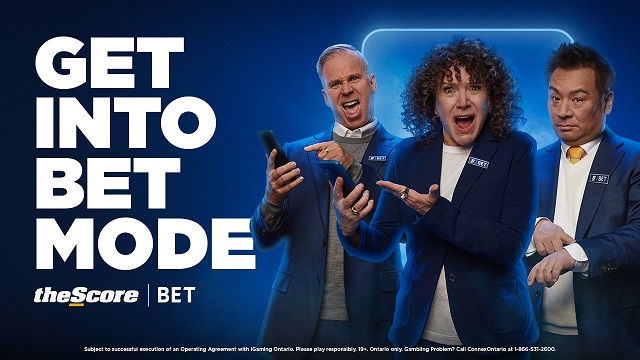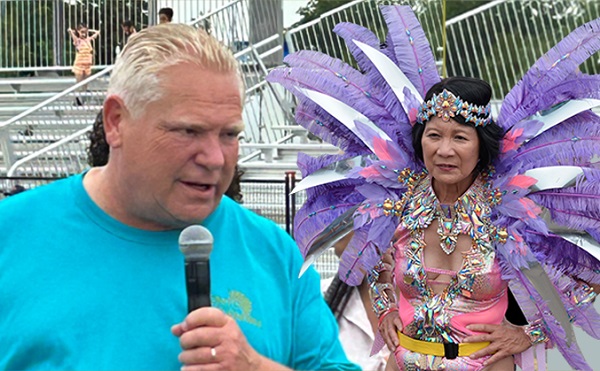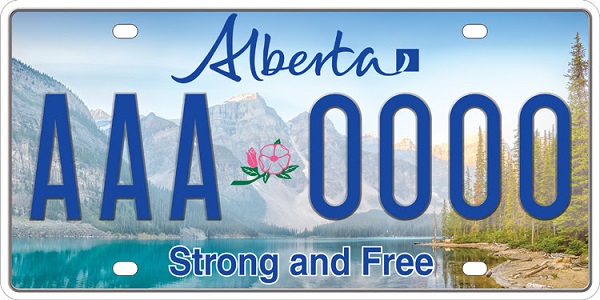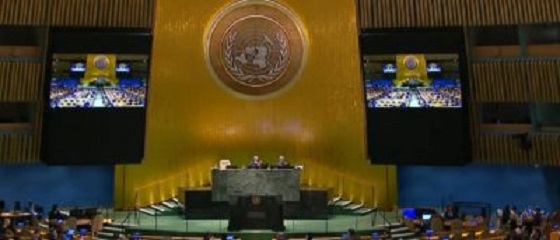Bruce Dowbiggin
How Betting Could Save Over-Expanded Leagues With Competition Problems

It’s not often that we get new traditions every day in the NHL playoffs. We’re used to octopus on the ice. Plastic rats, too. Ron Maclean using obscure Blue Rodeo lyrics to explain the icing rule. But now there is a new tradition, unlike another.
Bitching about betting ads during the broadcasts of games. Get any group of plus-50s fans together to talk about the playoffs and you’re guaranteed to hear a volley of complaints about the incursion of gambling commercials now peppering the HNIC playlist. Or, for that matter, the TBS hockey playlist in the U.S.
The grievances range from the interference in the play (“I just want to watch a game, not a pitch for the over/ under on Stu Skinner goals-against”) to corruption of youth (“We are teaching a generation of young people that gambling is okay”). Some are annoyed by the presence of Connor McDavid who has morphed from a punchline in Wayne Gretzky’s gambling resumé to a serious dude warning kids about responsible gambling.

The reliance on advertising from casinos and gambling sites is a swift jolt for sports broadcasters who clearly see a golden goose and are not going to let it get away. As we’ve said before, we have yet to have a signature funny commercial for gambling that takes it mainstream. Right now, in Canada particularly, the quality of ads is lame.
But. Let’s discuss the “corrupting youth” argument that seems to be the loudest voice from non-gamblers. As we discussed in the Shohei Ohtani case, gambling— in the form of betting, fantasy sports, office pools, pick-a-square etc.— has been a vast underground source of gambling that the abolitionists ignored for decades. Legalizing it has removed much of this action from the grip of organized crime. As Ohtani’s case showed, the sunlight of public betting allows for (mostly) better monitoring.
As well, the leagues don’t share in the betting revenues, removing any question about the integrity off the outcome. They do promote betting sites and casinos where betting takes place. But the earnings from that belongs to others, not the leagues.

Second, the generations of pecksniffs deploring these ads have watched ads for alcohol on sports broadcasts for decades. In case you’ve been on Mars, alcohol is highly addictive and a drain on society’s healthcare resources. Yet none of them made a puritanical peep about protecting youth from ads for beer that financed HNIC for 50 years. Consistency in this griping would be nice.
Third, there is a fundamental misunderstanding about gambling that most of the opponents miss. Yes, the money is staggering. It has brought to pro sports league revenues so they can pay NFL QBs $50 million a year. With the threat of regional cable broadcasting— and its revenues— collapsing in North America, a new source of profits is imperative.
It also favours the house. Winning 57-58 percent of your bets is considered excellent. But here’s something no one talks about. Recreational gambling is an answer to the problems created by bloated leagues of 30-plus teams. The chances of your favourite team winning the Stanley Cup or Super Bowl have shrunk to microscopic in most cases. As we pointed out in our 2021 book Cap In Hand, the pressure of salary caps has led organizations to adopt either a “we’ll go for it” stance for a “tank for a top pick” approach.

What used to be a healthy middle class in leagues— fifteenth place—is now a ghost town as teams either rise our fall accord to their title hopes. Trading deadlines midway through a season allow teams to dump big contracts or gather depth for a playoff run. By the end of the season the standings are a sandwich with no filling.
So how are broadcasters to maintain interest in lame squads losing at a prodigious rate? What do you say to keep fans coming back even when they know the inevitable result? Enter recreational gambling. The NFL has floated its boat on the power of pools, fantasy and illegal wagering for years. It knows its TV numbers would plummet without people tuning in to see how their fantasy teams, props bets and parlays are doing.
Allegiances to your bets are the coming thing in sports viewership. Not for nothing does ESPN— an NFL, NBA and NHL rights holder— feature a “Bad Beats” section on its sports desk coverage every night. It highlights the outcomes where winning and losing defies imagination. Canadian networks are still treating their betting tips as stand-alone segments, not incorporating a betting win/ loss segment. But with the Blue Jays and Raptors floundering they’ll need alternatives to recognizing the inevitable. Enter betting.
As well, the playoffs—usually a windfall for teams/ leagues—leave considerable inventory unrealized. Quick series make for diminished handles and lost ticket sales. For instance, in this year’s NHL playoffs, the losing team in the 14 series so far has averaged just 1.78 wins per series. The NBA is far worse. Losing teams in this year’s postseason are averaging just 1.2 wins per series.
It’s anticlimactic and predictable and expensive for leagues. So if you’re paying the kind of money the stars now command you have to get the secondary sources of revenue cranked up. That spells betting. Like it or not.
Bruce Dowbiggin @dowbboy is the editor of Not The Public Broadcaster A two-time winner of the Gemini Award as Canada’s top television sports broadcaster, he’s a regular contributor to Sirius XM Canada Talks Ch. 167. His new book Deal With It: The Trades That Stunned The NHL And Changed hockey is now available on Amazon. Inexact Science: The Six Most Compelling Draft Years In NHL History, his previous book with his son Evan, was voted the seventh-best professional hockey book of all time by bookauthority.org . His 2004 book Money Players was voted sixth best on the same list, and is available via brucedowbigginbooks.ca.
Bruce Dowbiggin
Sports 50/50 Draws: Make Sure You Read The Small Print

Throughout the recent World Series baseball fans were regaled with the exploding total in the Blue Jays World Series 50/50 draw. When the L.A.Dodgers finally subdued the Jays in the seventh game the total had skyrocketed to a whopping $50,020,115— half of which was won by a fan from Oshawa, Ont.
That means that $25,010,055 was donated to Jays Care Foundation which then sends money to worthy charities and causes supported by the Blue Jays. A number of those charities are identified by the team in its publicity. Win/ win, right?
Should be. But how much of the $25,010,055 devoted to charities and sports organizations goes to administer the draw? We examined the rules printed online and the financial records to see the distribution of those funds. “At Jays Care, every dollar of net revenue, after prize payouts and raffle-related expenses are deducted, goes directly to supporting kids in Jays Care programming.”
To the unwashed public that says that $25,010,055 is going completely to the charities;. Wait, they said “net revenue” and “raffle-related expenses” Okay, what constitutes net revenue? What are raffle-related expenses? In the 2024 statements for Jays Care Foundation, general and administration total is $324,321 after raising $21,234,364 . Seems like to might be worth noting.
This is not to suggest that the Jays Care lotteries are not what they seem on the surface. Or they do not have a charitable component. We have been unable to find any reporting on the draw that implies or states something shady. Or any reporting from Toronto’s vast media mob into just how these draws work. Still, the public should know how much of the prize money they’re donating goes to the charity. Because you won’t get it from listening to the team games on TV which marvel at the 50/50 amounts.
The Jays’ draw is worth noting, because there have been questions raised about other large sports 50/50 draws. The charity in charge of the Edmonton Oilers 50/50 raffles paid more than $81 million in lottery funds over four years to Win50, a sports betting and gaming company controlled by the Oilers Entertainment Group, according to audited financial statements obtained by the Investigative Journalism Foundation.

The IJF found that only 19.6 percent of the 50/50 raffle proceeds went to charity in 2024. The Oilers did not deny the claim, but did say that the charitable aspect of the draws and the publicity they generate far outweighs the costs in running the draws. “By focusing on expense ratios and purposely ignoring the millions of dollars in legitimate operational costs covered by WIN50, the IJF misleads readers about our how our 50/50 operates and our overall charitable impact.” Weak sauce, no?
Sources who spoke to us said that, in one case a capture of $550K returned just 10 percent— $55K— to their charity. The rest disappeared to pay bills and distribute funds as the organizers saw fit. Oh, and the charities must sign NDAs to keep their status as Oilers’ charities. There may be some legitimate reasons for the silence so far on the draws. But that was not communicated by the Oilers to their fans up front or in their response to the IJF.
It is reminiscent of stories we wrote for the Calgary Herald in the early 2000s about shady practices surrounding NHL oldtimers versus cops or fireman hockey promotions. Until we made it public the companies running the ticket sales oversold the arenas, created fictional handicapped children for donations, returned as little as five percent to charities and more— while never telling the NHL stars about the deception.
The other telling aspect of this Oilers Care story is that it was generated by an independent journalism source— not the main Edmonton media. The IJF is not likely to be getting seats on press row at the Rogers Centre any time soon with this kind of aggressive reporting.
With sports teams now partnering with broadcast and print partners, doing this kind of investigative work will not advance your career. We should know after enduring years of the cold shoulder for our reporting corruption in the NHL under Alan Eagleson and the league (Eagleson went to jail briefly for his fraudulent use of NHL Players Association and Hockey Canada funds.)

Rogers now has its name on numerous arenas and stadia across Canada. It controls MLSE, owners of the Maple Leafs, Raptors, Toronto FC and the Argonauts. Former journalists work for team owners. The government sends “support” money to so-called private broadcasters and newspapers to toe the line. As we wrote in October the PR pitch for Elbows Up has been everywhere in Canadian sport.
“Rogers Media is running commercials during the Blue Jays AL Divisional Series boasting in Liberal red and white “Proud owners of Canada’s national team”. (What team owner has ever put itself above the title on a sports team?) If you haven’t caught that ad there are others Rogers’ ads extolling its magnificence in giving Canada the highest telephone bills this side of Botswana. Oh wait… They say, Go Jays Go, Canada’s national team. Sorry about that.
The team’s announcers are also reading verbatim prefab slugs about the story of the Blue Jays “not being written yet.” (We counted three doing the hype before Gm. 1 of the World Series) Watching the proud-as-punch onslaught from the team’s owner one would think this has to be more than Vlad Guerrero uber alles.”
Watching the willful denial of Canada’s legacy-media death throes is reminiscent of when the big automobile companies were challenged by smaller, more efficient Asian imports in the early 1970s. The Detroit big shots tried ignoring them, then actively enlisted government to stop them. Then, with bankruptcies impending, they copied them. The car market finally became a freer market in North America.
The media elites are at the stage where they’re begging government to excuse their inefficiencies and corruption versus “uncouth” independent media. The protectionist racket won’t work any better than it did for the car makers. The question now is will they accept the ultimate solution of sharing the field with social media and doing that kind of reporting again? Because, without that reckoning they won’t be here to greet the 2030s.
As Mark Hebscher concludes in his new book Madness, “In the end it’s not so much the stories being covered as the stories being missed.”
Bruce Dowbiggin @dowbboy is the editor of Not The Public Broadcaster A two-time winner of the Gemini Award as Canada’s top television sports broadcaster, his new book Deal With It: The Trades That Stunned The NHL And Changed hockey is now available on Amazon. Inexact Science: The Six Most Compelling Draft Years In NHL History, his previous book with his son Evan, was voted the seventh-best professional hockey book of all time by bookauthority.org . His 2004 book Money Players was voted sixth best on the same list, and is available via brucedowbigginbooks.ca.
Bruce Dowbiggin
DEI Or Die: Out With Remembrance, In With Replacement

“Thank you to those so often forgotten by the politics of our city who made this movement their own. I speak of Yemeni Bodega owners and Mexican abuelas, Senegalese taxi drivers and Uzbek nurses, Trinidadian line cooks and Ethiopian aunties”.- new NYC mayor Zohran Mamdami
The new mayor’s effusive tribute to immigrants is very on-brand for the Woke Left. Coming as it did on the week where Canadians’ remembered the sacrifice of the over one hundred thousand who “died to make the world free” in WWI, WWII and Korea— even as their homes are squeezed between hereditary land rights and Justin Trudeau’s holiday camp.
For Boomers that battle sacrifice has underpinned their lifestyle for most of the past 75 years or so. No matter how cynical or hipster the Boomer, the phrase “They died to make the world free” was the Gorilla Glue holding Western civilizations together. Whether you agreed or not, you acknowledged its pre-eminence in society.
Those who annually recall family members who’d made the ultimate sacrifice underscore that “they died to make the world free” is foundational in their national myth making. For example, our younger son placed roses on my uncle’s grave in the Commonwealth war cemetery near Hanover, Germany. He then delivered the petals to his grandmother to acknowledge the loss of her brother.

These rituals of sacrifice were everywhere till the early decades of the twenty-first century when the demographics of declining birth rates in the West combined with aggressive immigration— both sanctioned and illegal— to create the Beirut described by mayor Mandami upon election. He was talking about NYC, but it could have been Toronto, Montreal or Vancouver. But you are free to ask what freedom means in this context.
North America in particular has long encouraged immigration. It was typically combined with assimilation in the doctrines used by governments of the day. People from around the globe arrived in the West and aspired to the cultural and financial modes they discovered. For one young Ukrainian boy we knew the figure of Frank Mahovlich, son of Croatian immigrants, on the Toronto Maple Leafs was proof that he could belong in his new society.
But somewhere along the way the suicidal empathy of progressives— combined with a need for low-income workers for corporations— loosened the expectations for those arriving in the West. In Canada, prime minster Justin Trudeau adopted Yan Martel’s diversity model of Canada as a travellers’ hotel. No longer would newcomers need to assimilate.
They could live side-by-side with ancestors of original inhabitants while still recreating their former homelands. In time the bureaucracy— and revenge of the cradle— would replace the cranky white people with a more malleable electorate. It was Replacement Theory.
The Canadian boys going over the top at Vimy or taking off in their Lancaster bombers would never have foreseen this as they risked their lives. They couldn’t countenance the people they’d fought for throwing away their sacrifice on a pandering scheme like DEI (diversity, equality, inclusion) which replaced merit with settler guilt in hiring decisions.
When government admonitions to accept their societal revolution failed to produce enough newcomer guilt, social media filled the gap. Remember the drowned Syrian boy on the beach in 2015? The uproar about Canada’s immigration policies helped unseat Steven Harper and install a trust-fund puppet in the PMO. And it opened the floodgates that sent Canada from 35 million to 42.5 population in a decade.
As Mark Steyn observes, “Winston Churchill said we shall fight them on the beaches; his grandson Rupert Soames set up the highly lucrative business model whereby we welcome them on the beaches …and then usher them to taxpayer-funded four-star hotels with three meals a day and complimentary cellphone. That’s the story of the post-war west in three generations of one family.”
Recent reports show that many top American corporations are moving away from DEI back to merit-based hiring. But Canada’s government, led by its Woke academic and culture sectors, remains stubbornly fixed on the DEI model. That obsession keeps the corporate side from emulating their American counterparts.
The tell that DEI is far from dead can be seen in how the advertising world has doubled down on the orthodoxy of majority male whites bad/ everyone else good. In what is clearly a political, not profitable approach, minorities, mixed-race couples and women are featured in commercials in numbers far disproportionate to their percentage of the population.
A blend of LGBTQ and Rousseau’s The Noble Savage has produced The Church Lady come to the 2020s. Upper-class blacks are portrayed as authority figures while white males are hillbilly figures of ridicule. This is not to placate those communities but to assuage the guilt felt by educated white liberals.
Mixed-race commercials now mandate that virtually no same-race figures be allowed to be paired on-camera. (Having the ironic effect of white liberals telling the minorities they worship that they are not worthwhile unless in combination with the evil settler demographic.)

It’s the same in movies and TV which used to complain about cultural appropriation but now suddenly place racial and gender-inappropriate actors in period roles that are clearly specific to whites and males. For example, Netflix’s new series Death by Lightning is set in Chicago, 1880 – and this foreground establishing scene pops up.:
•an Asian woman,
•two Black men,
•and a one-legged man
-
all walking together. @StutteringCraig estimates the odds of this DEI dream at roughly 1 in 640,000. No matter. Authenticity is so yesterday.
The DEI obsession has pilled over into traditional Remembrance Day ceremonies that were marred by land acknowledgements and slavery references (slavery was banned in Canada 45 years before it became a nation.) Which led to CBC running a story on the Palestinian flag being raised at Toronto city hall on Remembrance Day.
In B.C. premier David Eby has declared that Canada now needs a power-sharing with the Cowichan and their confederates. American politics is also loath to give up their DEI dogma. In one real-life example leftist radio host Stephanie Miller kissed the feet of unhinged Democrat Rep. Jasmine Crockett. “Why, yes I DID kiss the sneakers of @JasmineForUS and I DO worship the ground she walks on! And she was LOVELY about it!” The laces fetishists think this performative theatre will always be thus. It won’t.

“The Venetian Republic lasted 1,100 years – and ninety-nine per cent of North Americans have never heard of it. But, on present demographic and fiscal trends, that’s four times longer than the United States is likely to make it,” Steyn observes.
“Walk around New York: The Yemeni-Mexican-Senegalese-Uzbek-Trinidadian-Ethiopians are the future. And you’re not.”
Bruce Dowbiggin @dowbboy is the editor of Not The Public Broadcaster A two-time winner of the Gemini Award as Canada’s top television sports broadcaster, his new book Deal With It: The Trades That Stunned The NHL And Changed hockey is now available on Amazon. Inexact Science: The Six Most Compelling Draft Years In NHL History, his previous book with his son Evan, was voted the seventh-best professional hockey book of all time by bookauthority.org . His 2004 book Money Players was voted sixth best on the same list, and is available via brucedowbigginbooks.ca.
-

 Carbon Tax2 days ago
Carbon Tax2 days agoCarney fails to undo Trudeau’s devastating energy policies
-

 Alberta1 day ago
Alberta1 day agoAlbertans choose new licence plate design with the “Strong and Free” motto
-

 Daily Caller2 days ago
Daily Caller2 days ago‘Holy Sh*t!’: Podcaster Aghast As Charlie Kirk’s Security Leader Reads Texts He Allegedly Sent University Police
-

 Agriculture2 days ago
Agriculture2 days agoFederal cabinet calls for Canadian bank used primarily by white farmers to be more diverse
-

 Business2 days ago
Business2 days agoThe UN Pushing Carbon Taxes, Punishing Prosperity, And Promoting Poverty
-

 Alberta1 day ago
Alberta1 day agoEdmonton and Red Deer to Host 2027 IIHF World Junior Hockey Championship
-

 Great Reset2 days ago
Great Reset2 days agoCanadian government forcing doctors to promote euthanasia to patients: report
-

 Health1 day ago
Health1 day agoNEW STUDY: Infant Vaccine “Intensity” Strongly Predicts Autism Rates Worldwide






